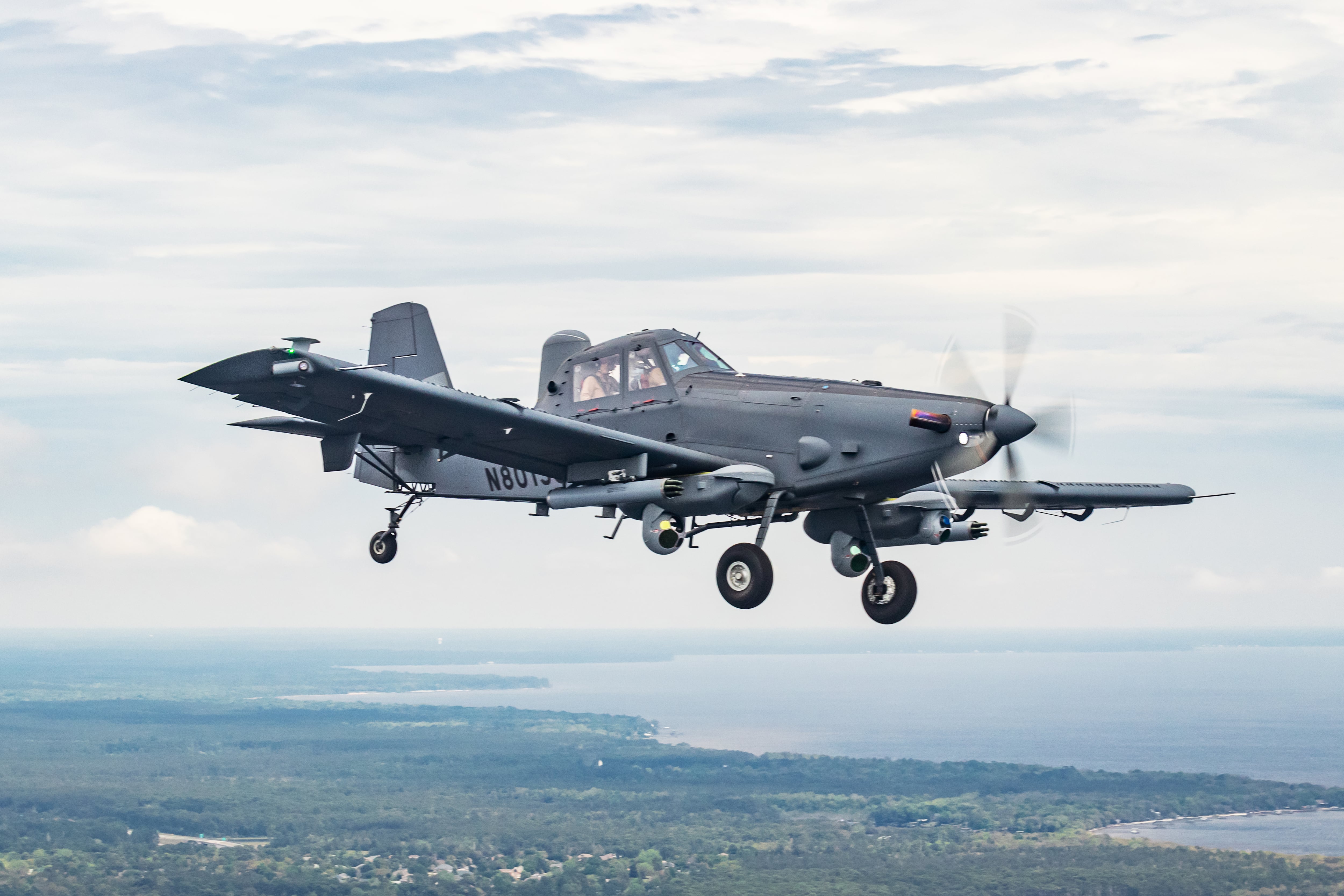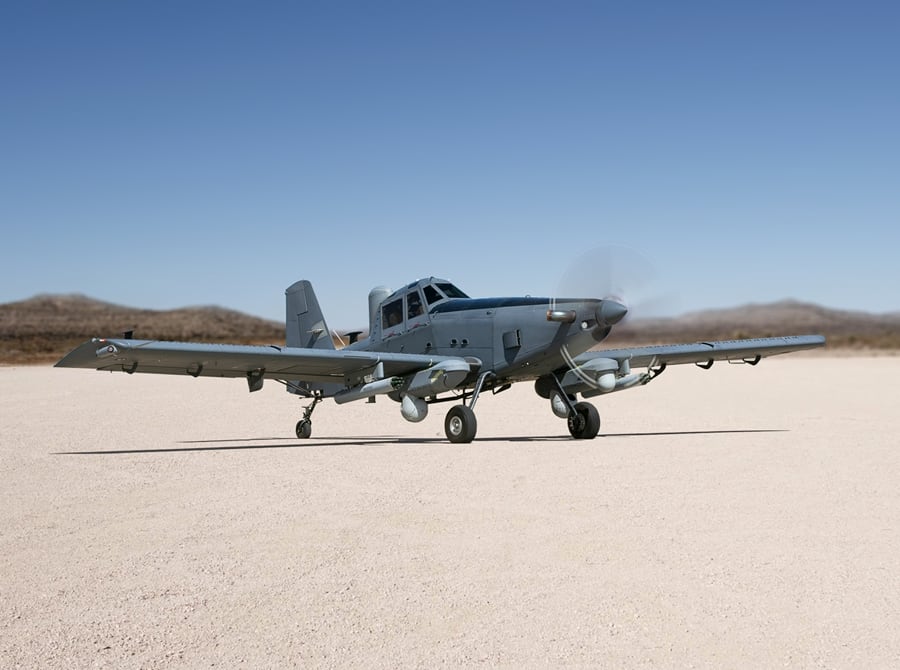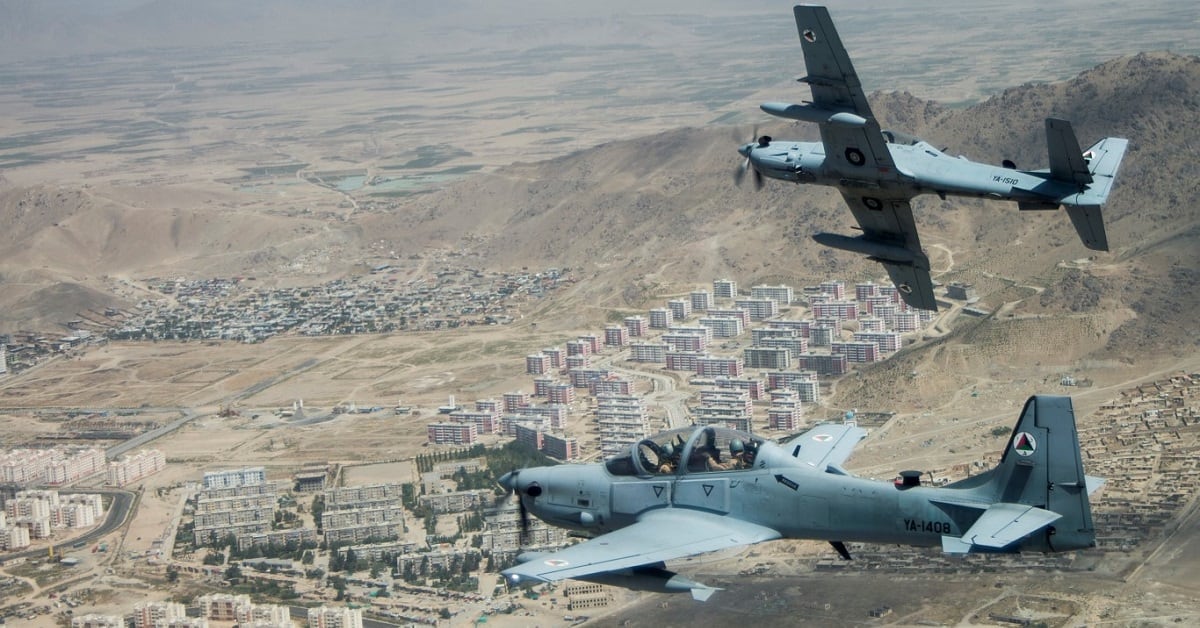Four months after military officials picked a modified crop duster as America’s newest counterterror plane, Air Force Special Operations Command is working to answer a crucial question: How do you fly it?
“We’re going to have to pay a lot of attention to training on this,” AFSOC boss Lt. Gen. Jim Slife told reporters in September. “We haven’t operated, at scale, a tail-dragger aircraft in quite some time.”
The Air Force and its special operations counterparts have sought a light attack and reconnaissance plane since 2009 but faltered at multiple points along the way. Their latest push began as an Air Force experiment in 2016 and morphed into a smaller procurement program overseen by SOCOM.
U.S. Special Operations Command chose the AT-802U Sky Warden, pitched by L3Harris and Air Tractor, to fill the role in August. The military plans to buy as many as 75 of the propeller-driven, fixed-wing aircraft under a contract worth up to $3 billion.
The newly designated OA-1K will replace other special operations platforms as the go-to plane for close air support, precision strike, and armed intelligence, surveillance and reconnaissance in counterterror missions.
Aircraft like the Sky Warden, known as “tail-wheel” planes, differ from other airframes during the most crucial phases of flight: taxi, takeoff and landing.
The OA-1K’s nose is angled up during ground operations, limiting what a pilot can see in front of the aircraft, AFSOC spokesperson Lt. Col. Becky Heyse said in an email Wednesday. Its center of gravity also falls behind, not in front of, the main landing gear.
RELATED

“What this means is that during taxi, takeoff and landing operations, pilots need to be more cognizant of aircraft alignment and crosswinds,” Heyse said. “Tail-wheel aircraft are more prone to rotational forces around their center of gravity, due to [their] location in relation to [the] main gear.”
Still, Slife said he’s comfortable with the plane’s built-in safety features.
“SOCOM picked a platform that I think we’ll make good use of,” he said. “But I am paying a lot of attention to what that training pipeline looks like, to make sure that we don’t put people in over their heads with a type of airplane they’re not used to flying.”
Air Education and Training Command, AFSOC and L3Harris are working on a syllabus that will guide airmen through the intricacies of tail-wheel flight. That syllabus will determine the length of each armed overwatch training class, Heyse said.
RELATED

The Air Force expects to run tests on the airframe until summer 2024, and have its instructors trained to teach students by fall 2025. AFSOC is considering training test pilots and instructors on commercial tail-wheel aircraft before they progress to the OA-1K itself.
It plans to bring in nearly 200 pilots to staff the fleet.
“The formal training unit plans to start training new OA-1K crews in the fall of 2025,” Heyse said. “Safety is our top priority, and we are dedicated to ensuring our crews receive the right training.”
The Air Force hasn’t decided where to base the OA-1K schoolhouse, though one option may be to pair it with other aviation training at Hurlburt. Hosting armed overwatch courses in the Florida Panhandle would give airmen access to the vast test and training range that stretches over the Gulf of Mexico.
RELATED

“Training will require munitions, appropriate munitions storage areas, munitions airmen for support and range airspace that supports live fire for the OA-1K, " Heyse said. “Also, with every squadron planned to receive a simulator, there will also need to be facilities to support the simulators.”
Armed overwatch planes are set to partially replace other pieces of the Air Force’s special operations intelligence fleet.
As of March 2021, the Oklahoma Air National Guard owned 13 MC-12W Liberty planes, while 28 active duty U-28A Draco planes operate out of Hurlburt Field, Florida, and Cannon Air Force Base, New Mexico.
“Our U-28 and MC-12 units are transitioning into the armed overwatch platform over the next half-dozen years or so,” Slife said. “It will largely be internal unit transitions.”
SOCOM plans to keep U-28s around to provide airborne intelligence in situations like search-and-rescue and humanitarian relief missions.
RELATED

SOCOM boss Gen. Richard Clarke has suggested that four operational squadrons of 15 planes, plus one training squadron, would be enough to meet combat needs while giving each unit enough rest.
The OA-1K fleet is slated to be fully operational in 2029.
“AFSOC is expecting it will be easy for crews to transition to this expanded mission set,” Heyse said. “The challenge will be in learning the intricacies of flying tail-wheel aircraft, which our teams are prepared to do.”
Rachel Cohen is the editor of Air Force Times. She joined the publication as its senior reporter in March 2021. Her work has appeared in the Washington Post, the Frederick News-Post (Md.), Air and Space Forces Magazine, Inside Defense, Inside Health Policy and elsewhere.





